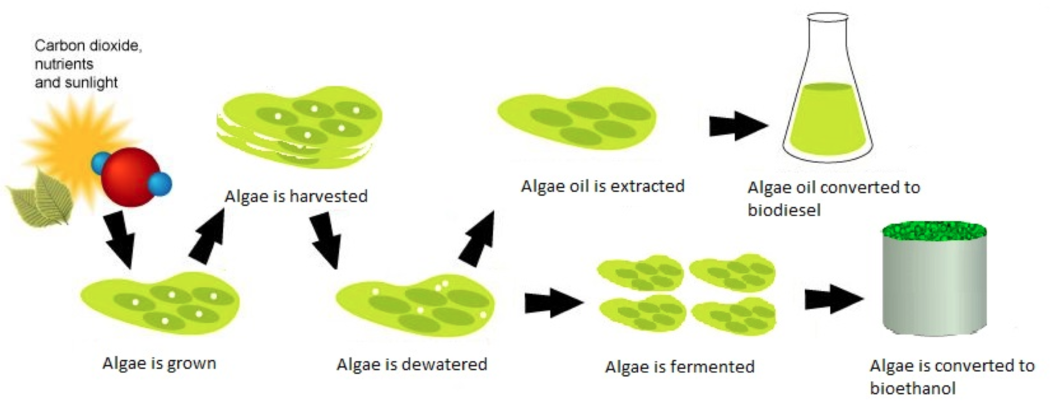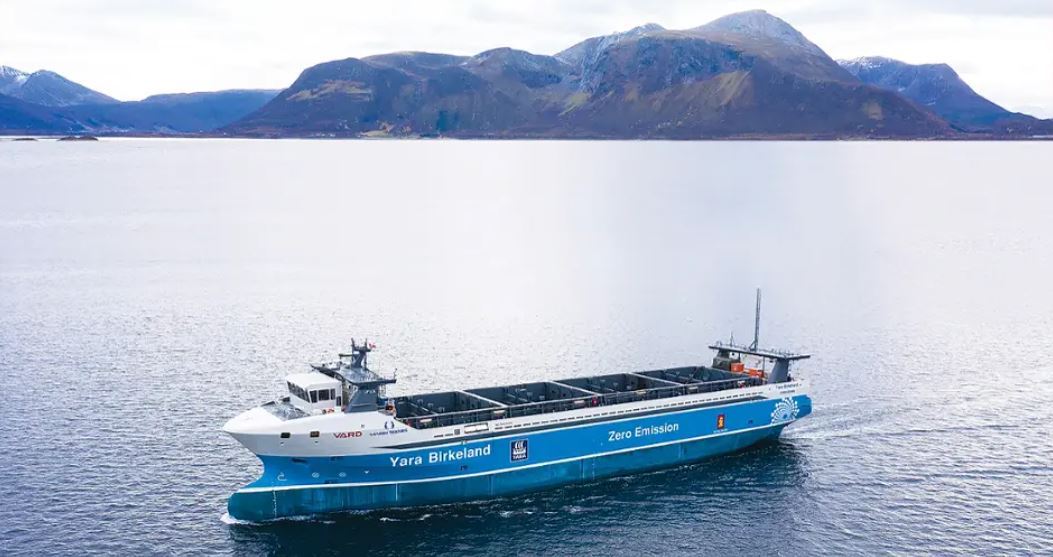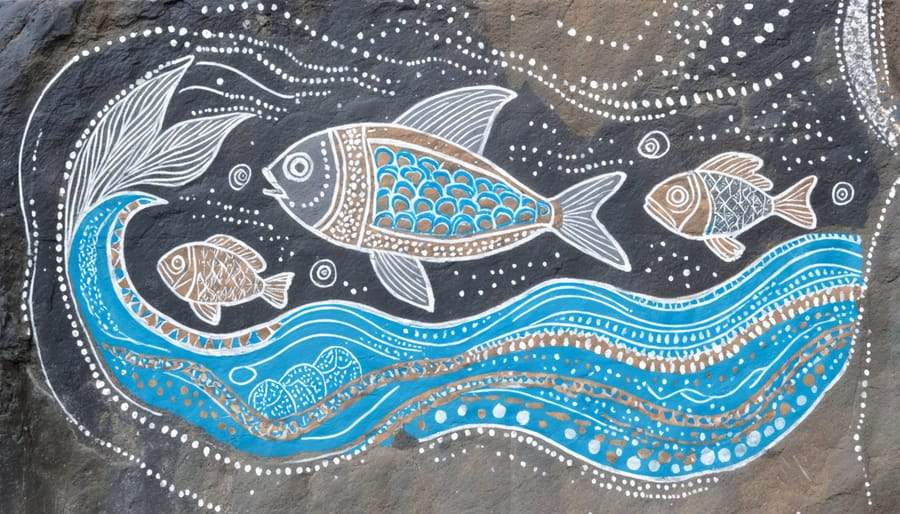The blue economy is shifting from aspiration to frontier practice. New technologies (algae-based fuels and biomaterials, autonomous vessels and sensor networks), novel finance models, and growing social movements (Indigenous stewardship, community science) are opening pathways to scale ocean-positive industries. At the same time the window to act is narrowing: climate impacts, biodiversity loss and inequitable governance demand faster, smarter, and more inclusive responses.
This chapter looks ahead. It surveys three future vectors for the blue economy — (1) technological innovation (algae biofuels, autonomous vessels); (2) the central role of Indigenous and local knowledge in marine stewardship; and (3) why cross-disciplinary, cross-border collaboration is no longer optional. For each, I’ll explain the current state, give concrete examples, cite recent research, and — crucially — show how design, planning and landscape architecture can translate potential into resilient, equitable, and beautiful practice.
1. Innovation frontiers: algae biofuels and autonomous vessels
A. Where we are now — algae & seaweed as materials and fuels

This illustrates that steps that take place to convert algae into biodiesel and bioethanol (Source: energyeducation.ca)
Algae (microalgae) and seaweed (macroalgae) attract attention because of rapid growth rates, multifunctional uses (food, feed, fertilizer, biomaterials, and biogas/biofuel), and the potential to use marginal ocean space. Research programs (e.g., U.S. National Renewable Energy Laboratory’s multi-year R&D on algal biofuels) have demonstrated technical pathways from lab to pilot, but commercial viability at large scale remains challenging due to production costs, processing complexity, and land/energy inputs.
Market analyses indicate growth in investment and interest: some commercial market reports project multi-billion dollar markets over the next decade — but these are contingent on overcoming technical and supply-chain barriers.
Recent, actionable examples: regional projects repurposing problematic sargassum blooms for energy, and national kelp-farming pilots in Scotland and elsewhere show the shift from R&D to demonstration. Caribbean startups and pilot projects are turning sargassum into biogas and fertilizer, with early local energy uses reported. In Scotland and across Europe, kelp farm pilots and policy guidance are framing seaweed as a real supply chain for food and industrial uses.
How design & landscape architecture accelerate algae/seaweed innovations
Designers and landscape architects are critical at several stages:
-
Farm & anchor design. Good farm layouts minimize conflict with navigation/fisheries, reduce entanglement risk, and optimize grow-out conditions (depth, current, shading). Seafarm layout is a design problem: spacing, buoy systems, and mooring types determine ecological outcomes and retrieval energy needs. (See seaweed farm guidance and feasibility reports for siting lessons.)
-
On-shore processing hubs. Architects design low-energy, modular processing buildings (dryers, anaerobic digesters, extraction units) that are close to farms to reduce transport emissions. Design can embed co-use functions — training rooms, markets, visitor interpretation — so infrastructure supports livelihoods and tourism.
-
Material and product design. Industrial designers and architects partner with material scientists to prototype kelp-derived bioplastics, insulation, or composites (e.g., companies converting kelp into nutraceuticals and ingredients), making the circular value chain visible and desirable to buyers.
-
Public engagement & aesthetics. Designers craft narratives and visitor experiences around seaweed farms (viewing platforms, boardwalks, interpretive signage), turning a technical industry into a publicly supported coastal asset — crucial when large visible farms are proposed near tourism or shorelines.
Design takeaway: The leap from pilot to market is equally a spatial, socio-economic and aesthetic challenge — not just a biology/engineering one. Design reduces friction: efficient farm geometry, resilient processing hubs, product aesthetics, and public acceptance.
B. Where we are now — autonomous and autonomous-enabled vessels
Autonomy at sea is moving quickly from military and research vehicles to commercial applications: remote-assisted navigation systems, autonomous survey vessels, and small unmanned surface vehicles (USVs). Flagship commercial projects — such as Norway’s Yara Birkeland (designed as a zero-emission, autonomous container ship) — show progress but also reveal regulatory, safety and infrastructure gaps that slow full commercial roll-out. Industry leaders (Kongsberg, Sea Machines, Wärtsilä among others) are developing modular autonomy stacks, remote control centres, and sensor/AI integration for navigation and operations.

Yara Birkeland (Source: yara.com)
How design & landscape architecture shape autonomous marine futures
Autonomous shipping is not just about software and ships — it reshapes ports, harbours, coastal communities, and the visual seascape:
-
Port and berth design for autonomous operations. Designers and port planners must reconfigure quays for electric charging, remote control hubs, modular robotic maintenance yards, and automated cargo handling zones with safe human-machine interfaces. Designs must balance industrial efficiency with community access and biodiversity buffers.
-
Human-centred control spaces. Ship control centres (shore control rooms) are spatial design problems: ergonomic layouts, large-format visualization of sensor feeds, staff rest areas for long vigilance periods, and embedded public transparency (e.g., community dashboards showing routes, emissions saved).
-
Safety & seascape visualisation. Landscape architects and visual designers create seascape simulations to help communities see how autonomous vessel routes or on-water infrastructure will look — a key lever for social licence.
-
Design for multi-use waterways. As vessels become more automated, shared waterways must be rethought; designers can create signage systems, designated lanes, and integration of AIS/visual cues in the built and natural environment.
Design takeaway: autonomy shifts activity from ship to shore; designers translate new technical needs into safe, navigable, and publicly legible harbour landscapes.
2. Indigenous knowledge in marine conservation
Traditional indigenous rock art depicting marine life and ocean connections - (Source: marinebiodiversity.ca)
A. Current situation & why it matters
Across regions — from Haida Gwaii (British Columbia) to Aotearoa New Zealand, Australia, and the Pacific — Indigenous peoples have established stewardship systems that bind culture, law and ecology. Recent policy advances (co-governance agreements, Indigenous marine spatial plans) show that Indigenous knowledge and governance produce more equitable and effective conservation outcomes when paired with science. The Ocean Panel’s guidance and case studies spotlight co-production and Indigenous leadership as best practice in marine planning (e.g., Haida Gwaii co-developed marine plan).
Academic research on co-management and customary practice documents both the promise and practical barriers (legal recognition, capacity, mixing knowledge systems) — but also shows that inclusion leads to enhanced monitoring, enforcement, and culturally appropriate protected areas.
B. How design, planning and landscape architecture can operationalize Indigenous stewardship
Design disciplines can translate Indigenous practices into spatial forms and accessible infrastructure in ways that respect cultural protocols:
-
Co-design processes & cultural mapping. Landscape architects facilitate participatory mapping sessions that record fishing grounds, sacred sites, travel routes, and seasonal use — producing maps that planners can use in MSP and that visually embed TEK (Traditional Ecological Knowledge) into spatial plans. The Ocean Panel report emphasizes co-production methods.
-
Seascape architecture that encodes relationships. Designers materialize relationships through small-scale infrastructure: low-impact moorings for traditional craft, interpretation nodes that tell oral histories, sculptural wayfinding that references cultural motifs, and habitat restoration projects led by Indigenous knowledge (e.g., eelgrass restoration guided by local seasonal cues).
-
Designing monitoring & stewardship infrastructure. Shelters for community rangers, data kiosks integrating citizen science and TEK, low-impact docks designed by/for small boats — these are design tasks that support governance and enforcement.
-
Protocols and aesthetic humility. Designers must work under Indigenous leadership; design outputs should be culturally endorsed, non-extractive, and always reversible where appropriate.
Design takeaway: Design is a mediator: it makes Indigenous knowledge legible to planners and publics while centring Indigenous authority in shaping marine futures.
3. The need for cross-disciplinary, cross-border collaboration
A. Current situation — complexity requires networks
Ocean systems don’t respect political boundaries. The science that informs climate adaptation, shipping safety, fisheries management and biodiversity protection requires transnational data flows, harmonized standards (for sensors, AIS, species inventories), and shared R&D. Initiatives such as the UN Decade of Ocean Science (2021–2030) explicitly call for co-design, capacity building and partnerships that cross disciplines and borders. The High-Level Ocean Panel drives political consensus on sustainable ocean economies.
However, common obstacles remain: siloed funding streams, mismatched data standards, uneven capacity (particularly in low-income coastal states), and design/implementation gaps between scientific knowledge and place-based action.
B. How designers & landscape architects enable effective collaboration
Designers play connective, translational roles that make cross-disciplinary collaboration operational:
-
Visual interoperability. Designers convert complex scientific layers into interactive maps, simulations, and dashboards that stakeholders across language and disciplinary barriers can understand — a basic prerequisite for transboundary MSP and joint procurement.
-
Living labs and pilot corridors. Waterfront living labs function as shared sites where engineers, ecologists, community members and policymakers test modular infrastructure. These pilots create shared evidence and reduce political risk for scaling.
-
Data-to-design platforms. Designers working with GIS/UX teams create digital twins and public UIs that allow remote partners to explore scenarios and iterate designs together.
-
Design briefs for international finance. Attaching robust design standards to blue bonds, climate funds, and EU grants helps ensure financed projects deliver ecological and social co-benefits — not just infrastructure. Seychelles’ blue bond experience is instructive: finance works better when coupled to transparent monitoring and place-based design for public benefit.
-
Capacity building through studios and exchanges. Academic design studios that pair students with coastal communities (co-supervised by ecologists and local leaders) create cross-border learning and technical capacity while producing implementable design prototypes.
Design takeaway: Designers are translators, integrators and implementers — the glue that binds science, engineering, policy and communities into coherent cross-border action.
Concrete design strategies and projects you can point to
-
Design & infrastructure for algae value chains.
-
Siting & farm geometry: minimize conflicts with shipping/fisheries; optimize currents; design retrieval systems to reduce loss. (See Scottish Seaweed guidance for site selection.)
-
Processing hubs as civic infrastructure: modular, solar-assisted dryers and anaerobic digesters with community spaces (training, markets) to retain value locally.
-
-
Ports & shore hubs for autonomous vessels.
-
Retrofit piers with charging nodes, robotic maintenance bays and shore-control rooms designed for human factors and public transparency. (See industry roadmaps by Kongsberg and Sea Machines.)
-
-
Seascape & cultural infrastructure for Indigenous stewardship.
-
Co-designed monitoring stations, low-impact docks, interpretation nodes that embed TEK into public-facing assets and enforcement infrastructure. (Haida Gwaii and other co-management case studies show how design can operationalise co-governance.)
-
-
Living labs and data visualisation.
-
Waterfront testbeds (e.g., Rotterdam’s Floating Pavilion, NYC’s Living Breakwaters) combine demonstration, monitoring, and community programs; digital twins make lessons shareable across borders. SCAPE’s Living Breakwaters is a clear model of nature-based infrastructure integrated with social programming.
-
Voices from practice (short expert perspectives)
-
Kate Orff (SCAPE): on blending ecological restoration with coastal defence — Living Breakwaters shows nature-based infrastructure can both protect and regenerate nearshore ecology.
-
Industry tech (Kongsberg / Sea Machines): autonomy is becoming interoperable tech stacks; governments and designers must reconfigure shore systems and visualisation to support safe deployment.
-
Ocean science (NREL / academic reviews): algal biofuels have technical promise but need integrated engineering, design for processing, and supportive policy to reach scale.
-
Ocean Panel / Indigenous co-production guidance: co-produced plans (e.g., Haida Gwaii) illustrate how power-sharing with Indigenous nations leads to better marine protection and stronger stewardship.
Practical checklist for designers, planners and landscape architects (actionable steps)
-
Learn the language of marine data. Get comfortable with bathymetry, currents, AIS, and fisheries data; partner with oceanographers to translate outputs into design constraints and opportunities.
-
Co-produce early. Start with communities and Indigenous partners; embed TEK into site diagnosis and design briefs.
-
Design for reversibility and modularity. Floating farms, modular processing hubs and demountable port fittings reduce lock-in and enable circularity.
-
Insist on monitoring & storytelling. Every pilot should include accessible dashboards, signage and programs that explain ecological and social outcomes.
-
Prototype in living labs. Use pilots to de-risk new practices, collect evidence, and create templates for scaling across borders.
-
Specify social & ecological KPIs in finance. When working with blue bonds or grants, include design standards and monitoring clauses.
Conclusion
The future blue economy will be engineered by many hands — scientists, entrepreneurs, policy makers, fisherfolk and, importantly, designers. The technical leaps in algae-based materials and autonomous vessels are exciting, but they are necessary, not sufficient. To be just, durable, and ecologically restorative these technologies must be sited, shaped and animated through design processes that foreground community rights, Indigenous stewardship, public access, aesthetics and multi-species flourishing.
Design, landscape architecture and planning do what neither science nor engineering can do alone: they render complexity legible, mediate tradeoffs, craft experiences that build stewardship, and shape the built edges where ocean policies become tangible. If the blue economy is to be a success, it will be because designers helped translate bold ideas into everyday places that both people and nature can thrive in.
Featured Posts
Blog Topics
Urban environment & Public spaces
Stay updated with the latest articles and insights from The Landscape Lab. Here, you will find valuable information and engaging content.
Waterfront & Coastal Resilience
Stay updated with the latest articles and insights from The Landscape Lab. Here, you will find valuable information and engaging content.
Captivating Photography
Stay updated with the latest articles and insights from The Landscape Lab. Here, you will find valuable information and engaging content.
Why Read The Landscape Lab Blog?
The way we design and interact with landscapes is more important than ever. As cities expand, coastlines shift, and climate change reshapes our world, the choices we make about land, water, and urban spaces have lasting impacts. The Landscape Lab Blog is here to spark fresh conversations, challenge conventional thinking, and inspire new approaches to sustainable and resilient design.
If you’re a landscape architect, urban planner, environmentalist, or simply someone who cares about how our surroundings shape our lives, this blog offers insights that matter. We explore the intersections between nature and the built environment, diving into real-world examples of cities adapting to rising sea levels, innovative waterfront designs, and the revival of native ecosystems. We look at how landscapes can work with nature rather than against it, ensuring long-term sustainability and biodiversity.
By reading The Landscape Lab, you'll gain a deeper understanding of the evolving field of landscape design—from rewilding initiatives to regenerative urban planning. Whether it’s uncovering the forgotten history of resilient landscapes, analyzing groundbreaking projects, or discussing the future of green infrastructure, this blog provides a space for learning, inspiration, and meaningful dialogue.
Location:
The Landscape Lab
123 Greenway Drive
Garden City
NY 12345
United Kingdom
Contact Number:
Get in Touch:
contact@thelandscapelab.co.uk
© 2025 thelandscapelab.co.uk - Your go-to blog for landscaping insights

